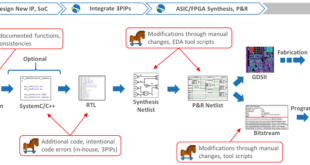In today’s digital age, cybersecurity has become a paramount concern for organizations of all sizes. As technology continues to advance, so do the threats posed by cyberattacks. A recent cybersecurity report sheds light on the progress made in organizational cyber resilience while also highlighting areas of concern and avenues for improvement.
In the turbulent landscape of 2023, characterized by geopolitical tensions, armed conflicts, and economic uncertainties, the cybersecurity economy experienced unprecedented growth, outpacing the overall global economy and even the tech sector. However, this growth was not uniform across all organizations and countries. A stark divide emerged between cyber-resilient organizations and those struggling to keep up, exacerbated by various factors including the evolving threat landscape, economic trends, industry regulations, and the adoption of new technologies.
The Growing Divide
The Global Cybersecurity Outlook 2024 reveals a concerning trend of growing cyber inequity, with organizations falling into two distinct categories: those that are cyber resilient and those that are not. This divide is particularly pronounced among small and medium enterprises (SMEs), which are disproportionately affected by the widening gap. While larger organizations demonstrated remarkable gains in cyber resilience, SMEs faced significant challenges, leading to a decline in their cyber readiness.
Cyber Inequity: One of the central themes of the report is the growing divide between cyber-resilient organizations and those struggling to keep up. This divide is exacerbated by factors such as the rising cost of cyber services and tools, uneven access to innovative technology, and regulatory challenges. As a result, the number of organizations maintaining minimum cyber resilience is declining, particularly affecting small and medium enterprises (SMEs).
Emerging Technologies:
The emergence of powerful new technologies like generative AI presents both opportunities and challenges. While AI can be a valuable tool for businesses, it can also be weaponized by cybercriminals to launch more sophisticated and targeted attacks.
The rapid adoption of technologies like generative AI poses significant challenges for cybersecurity. While these technologies offer vast potential benefits, they also introduce new risks, including advanced phishing, deepfakes, and other forms of cyberattacks.
Concerns about the impact of generative AI on cybersecurity are widespread, with many executives expressing worries about its potential to advantage attackers. Businesses must be aware of these potential risks and take steps to mitigate them.
Geopolitical Tensions:
The report emphasizes the concerning link between rising geopolitical tensions and an increase in cyberattacks. As tensions escalate, nation-states are increasingly using cyberwarfare as a tool to disrupt and damage their adversaries. This creates a ripple effect, making all businesses more vulnerable to collateral damage from cyberattacks launched by nation-states.
Geopolitical factors continue to influence cybersecurity strategies, with organizations adjusting their approaches in response to global events. The report highlights the intersection of geopolitics, emerging technologies, and cybersecurity, emphasizing the need for a multipronged defense strategy to safeguard critical systems and processes, such as electoral systems, against cyber threats.
Addressing Cyber Inequity:
Addressing cyber inequity requires a systemic solution involving collaboration between stakeholders across sectors and geographies. Urgent action is needed to bridge the gap between cyber-resilient organizations and those at risk, particularly SMEs. Initiatives aimed at promoting cybersecurity fundamentals and addressing existing gaps are crucial for enhancing overall cyber resilience.
Harnessing Emerging Technologies:
While emerging technologies present challenges, they also offer opportunities to improve cybersecurity practices. Leveraging technologies like generative AI can enhance security measures, automate processes, and strengthen defenses against evolving threats. However, it’s essential to prioritize cybersecurity fundamentals and ensure responsible implementation of new technologies.
In conclusion, the 2024 Global Cybersecurity Outlook underscores the critical importance of addressing cyber inequity, mitigating the impact of emerging technologies, and strengthening cybersecurity measures in the face of geopolitical challenges. By fostering collaboration, investing in cybersecurity fundamentals, and harnessing the potential of emerging technologies responsibly, organizations can navigate the complex cyber landscape more effectively and build a more resilient digital future.
Key Findings
Declining Middle Grouping: The number of organizations maintaining minimum viable cyber resilience has decreased by 30%, indicating a disappearing middle ground in cyber resilience capability.
Impact on SMEs: SMEs, despite constituting the majority of many countries’ ecosystems, are disproportionately affected by the cyber resilience gap, with more than twice as many lacking adequate cyber resilience compared to large organizations.
Technology Challenges: The adoption of emerging technologies, such as generative artificial intelligence (AI), presents new challenges to cyber resilience, with fewer than one in 10 respondents believing that generative AI will favor defenders over attackers.
Skills Shortage: The shortage of cyber skills and talent continues to widen, with half of the smallest organizations reporting a lack of necessary skills to meet their cyber objectives.
In an ever-evolving cybersecurity landscape, the demand for skilled professionals continues to intensify, while the available talent pool remains insufficient. The skills gap is widening, with 20% of organizations reporting a lack of necessary skills to achieve their cybersecurity objectives, doubling from 2022 to 2023. This shortage extends beyond specific tasks, affecting critical technical and soft skills necessary for strategic cyber resilience. Particularly concerning is the inequity in skills availability, with smaller organizations facing the greatest challenge due to budget constraints and limited access to talent. To address this gap, organizations are increasingly focusing on upskilling existing employees, with 91% willing to invest in cybersecurity training and certification. However, traditional recruitment paths still dominate, with only 9% of organizations recruiting from non-traditional cybersecurity backgrounds.
Despite efforts to bridge the skills gap, operational disruption remains a significant concern for organizations facing cyber incidents. Legacy technology poses a formidable barrier to cyber resilience, especially for larger organizations, surpassing executive support and skills gaps. As organizations rush to adopt emerging technologies like generative AI, the risk posed by legacy systems becomes more pronounced, exacerbating technological complexities and adding security risks.
The Urgent Need for Cyber Resilience:
The WEF report underscores the urgent need for businesses to build strong cyber resilience. This involves implementing robust security measures, educating employees about cyber threats, and having a plan in place for responding to cyberattacks.
However, a strategic focus on cyber resilience practices is yielding positive results, with confidence in organizational cyber resilience steadily increasing year on year. Organizations are integrating cybersecurity into enterprise risk management, gaining executive leadership buy-in, and fostering a culture of collaboration and knowledge-sharing across departments. This alignment between cyber and business leaders is crucial for building trust and resilience within organizations, as evidenced by the correlation between CEO trust and perceived cyber resilience.
The report highlights some key challenges and opportunities in enhancing cyber resilience within organizations and across ecosystems. Here’s a summary:
Optimism vs. Reality:
While notable progress has been observed in organizational cyber resilience, the report reveals that only 22% of respondents are optimistic about improvements in cyber governance and culture in the next two years. Larger organizations and those in the public sector are more likely to suffer material impacts from cyberattacks, indicating the need for enhanced cybersecurity measures across the board.
Public-Private Collaboration:
There is a growing recognition of the need for greater cooperation between the public and private sectors to address cyber resilience challenges effectively. Initiatives like Australia’s investment in SME cyber resilience and the EU’s Cybersecurity Competence Centre demonstrate the growing recognition of the importance of public-private partnerships in bolstering cybersecurity. By partnering with the private sector, governments can strengthen the overall cybersecurity posture of the ecosystem.
Responsibility Imbalance:
A glaring imbalance exists in security responsibility between technology producers and consumers. Cyber leaders are increasingly held personally accountable for cybersecurity, with legal consequences for negligence or intentional cover-ups. This highlights the need for greater accountability and transparency in cybersecurity practices.
Insurance and Risk Management:
While cyber insurance is a valuable tool for mitigating financial harm from cyber incidents, its adoption remains low, especially among smaller organizations. Greater collaboration between insurers and consumers, coupled with transparency in insurance practices, can incentivize better cyber risk management.
Supply Chain Vulnerabilities:
Many organizations lack a comprehensive understanding of their supply chain cyber risks, leading to vulnerabilities that cyber attackers exploit. Efforts like the SCRE Initiative aim to address regulatory fragmentation and improve supply chain cybersecurity through collaboration and standardization.
As organizations navigate the evolving threat landscape, maintaining a focus on foundational cybersecurity elements, upskilling employees, and fostering cross-departmental collaboration will be essential for building cyber resilience. While the journey to resilience is ongoing, it is one that can be tackled through strategic planning, prudent cyber-resilience practices, and C-suite-level support.
Addressing the Divide
To bridge the cyber resilience divide and ensure a more secure digital future, concerted efforts are needed from both organizations and policymakers:
- Investment in Cyber Resilience: Organizations must prioritize investment in cyber resilience, particularly SMEs, to enhance their ability to withstand cyber threats.
- Awareness and Education: Increasing awareness and education about cybersecurity risks and best practices is essential to empower organizations of all sizes to strengthen their cyber defenses.
- Collaboration: Public-private collaboration is crucial to sharing resources, expertise, and best practices in cybersecurity to mitigate the impact of cyber threats.
- Regulatory Frameworks: Governments and regulatory bodies should implement effective cybersecurity regulations to reduce cyber risks and promote cyber resilience across industries.
In addition to the points mentioned above, the WEF report also emphasizes the importance of:
-
Investing in cybersecurity awareness training for employees: Educating employees about cyber threats is crucial for any organization’s cybersecurity strategy. Employees are often the first line of defense against cyberattacks, so it’s essential to equip them with the knowledge and skills they need to identify and report suspicious activity.
-
Regularly patching vulnerabilities: Cybercriminals are constantly looking for new ways to exploit vulnerabilities in software and systems. Businesses must patch vulnerabilities promptly to minimize the risk of a cyberattack.
-
Implementing strong security measures: Businesses should implement a layered security approach that includes firewalls, intrusion detection systems, and data encryption.
-
Having a plan for responding to cyberattacks: No organization is immune to cyberattacks. It’s essential to have a plan in place for how to respond to a cyberattack in order to minimize damage and downtime.
By following these recommendations, businesses can build a more secure digital future and reduce the risk of falling victim to a cyberattack.
Conclusion
The WEF report serves as a wake-up call for businesses of all sizes. In today’s digital age, cyber resilience is no longer optional – it’s a critical imperative. Businesses must take proactive steps to safeguard their data and systems from a constantly evolving threat landscape.
The Global Cybersecurity Outlook 2024 highlights the urgent need to address the widening cyber resilience gap and ensure a more equitable and secure digital ecosystem for organizations worldwide. By prioritizing investment in cyber resilience, fostering collaboration, and promoting cybersecurity awareness, stakeholders can work together to build a more resilient and trustworthy digital future.
 International Defense Security & Technology Your trusted Source for News, Research and Analysis
International Defense Security & Technology Your trusted Source for News, Research and Analysis

